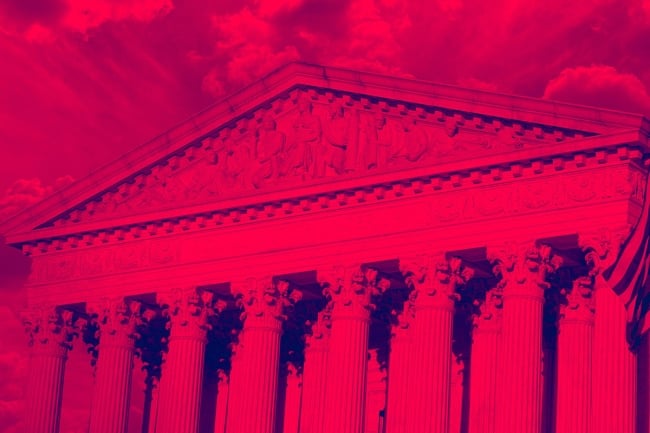You have /5 articles left.
Sign up for a free account or log in.

Douglas Rissing/iStock/Getty Images Plus
Colleges and universities had braced themselves for devastating outcomes in the Students for Fair Admissions v. Harvard College and University of North Carolina at Chapel Hill cases. Well ahead of the U.S. Supreme Court’s ruling last summer that outlawed the use of race as a variable in admissions, campus and enrollment management professionals began envisioning a future without affirmative action.
Minutes, hours and days after the SCOTUS decisions were released, many presidents and admission deans across the country issued written statements espousing their institutions’ continued commitments to enrolling diverse student bodies. Too few of them have since said much else—at least not publicly. Other seemingly more pressing challenges have demanded their attention.
Higher education leaders are devoting significant time to addressing enrollment declines and corresponding financial woes. Encampments and other protest activities on campuses and at commencements this spring engendered tremendous stress for many. The FAFSA fiasco was an unwelcome, unexpected disaster with consequences that will no doubt compound those of losing affirmative action.
And then there are the politicized attacks on diversity, equity and inclusion. In Florida, North Carolina, Oklahoma, Texas and other states, administrators are being forced to rename, defund or altogether eliminate DEI programs and positions. This week, public universities in Utah are shutting down their DEI units, including student centers. Understandably, navigating the anti-DEI movement commands extraordinary amounts of time and attention. For some, talking publicly about recruiting students of color might be seen as unnecessarily risky in this political environment.
This all comes on top of normal administrative stressors and responsibilities. Consequently, other than ensuring compliance, a now year-old Supreme Court ruling hasn’t been as top of mind for leaders as it should have been over the past several months. This is understandable, yet alarmingly dangerous.
Mixed messages about enrollment shifts could also become an early distraction. In their analyses of historical trend data, authors of a recent Common App study found no significant racial differences in applicants’ behaviors (e.g., where and to how many colleges they applied) in the first admission season following the SCOTUS SFFA rulings. That’s really good, for now. Let’s hope it holds.
However, it would be a mistake to presume that diversity will sustain itself just because there weren’t outrageous declines among applicants of color in the first post–affirmative action year. Also noteworthy is that the Common App study is based on a national sample. Individual institutions ought not to presume that national trends are consistent with their local realities. In fact, we are aware of one highly selective university that is expecting to welcome half as many Black students this fall in comparison to prior years.
The University of California system remains a useful historical example of what could occur if campus leaders devote insufficient attention to diversity in the aftermath of an affirmative action ban. For instance, the University of California, Los Angeles, enrolled just 100 Black first-year students (many of whom were athletes) a decade after California voters passed Proposition 209, a 1996 ballot measure that made race-conscious admissions unlawful here.
Surely, many enrollment management professionals and others throughout the UC system were paying attention to application, admit and yield rates in that first decade and beyond. It’s unlikely that they suddenly found themselves with inexcusably low numbers of Black students overnight. It’s much more plausible that leaders across the campuses (perhaps even a few who worked in admissions offices during that era) invested insufficient energy into establishing stronger partnerships with Black communities and college-access programs, innovating their outreach efforts in legally allowable ways, and adapting the strategies coaches were using to attract talented Black student athletes to play on revenue-generating sports teams at Berkeley and UCLA.
It could be that making a way for Black students just wasn’t important to enough influential people on those campuses. But it’s also entirely possible that Black Californians and the other populations most negatively affected by Proposition 209 simply got lost amid inescapable administrative chaos and evolving institutional priorities.
Versions of the catastrophic UC system outcome are guaranteed to ensue if leaders fail to pay more attention, consistently message the value of diverse student bodies, experiment with bolder recruitment methods, hold themselves and others more accountable, and revise their approaches as data make clear what isn’t working and for whom.
To make good on commitments articulated in statements during that week after the SCOTUS rulings were announced, leaders all across campuses (not just those who work in admissions offices) must keep diversity atop their agendas. Doing so necessitates mindfulness and intentionality. Absent this, other problems and priorities will take over, and within just a few years institutions will find themselves with unexplainably low numbers of students who make their campuses diverse.




